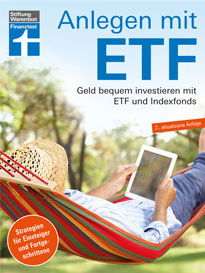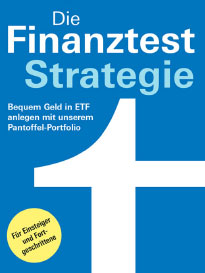Die Spekulanten nehmen die Commerzbank-Aktie ins Visier und drücken den Kurs nach unten. Typisch und an sich nicht ungewöhnlich ist dies vor einer Kapitalerhöhung, da viele Investoren aufgrund des Verwässerungseffekts auf der Ertragsseite des Unternehmens und des erhöhten Liquiditätsbedarfs für den Investor die Aktie abstossen. Doch genau dieses Szenario ist attraktiv für Renditejäger.
Denn der Abgabedruck sowie massive Leerverkäufe, wie wir sie bei der Commerzbank-Aktie gesehen haben, erhöhen die implizite Volatiltität, die erwartete Schwankungsbreite für die Aktie. Dazu ein kurzer Ausflug hinter die Kulissen: Für Optionen mit 90 Tagen Laufzeit, deren Basispreis in etwa dem aktuellen Aktienkurs entspricht, werden momentan rund 38 Prozentpunkte implizite Volatilität gepreist. Je nach Basispreis sind sie zum Teil noch weit höher. Generell gilt: Je höher die implizite Volatilität, desto teurer sind Optionen. Derzeit ist die Commerzbank-Aktie der DAX-Titel mit der höchsten erwarteten Schwankungsbreite. Für den DAX rechnet der Markt mit nur halb so viel Volatilität: Rund 18,8 Prozent.
Die hohe implizite Volatilität der Commerzbank-Aktie verteuert Calls und Puts, daher sollten Käufer sie meiden. Lukrativ ist das Szenario jedoch für Optionsverkäufer, die sozusagen die Stillhalterposition einnehmen und Prämien dafür kassieren, dass sie die Aktie liefern (Verkäufer eines Calls) beziehungsweise abnehmen (Verkäufer eines Puts). Denn in der Regel legt sich der Verkaufsdruck nach der Kapitalerhöhung wieder und der Kurs stabilisiert sich.
Eine einfache Alternative zum Verkauf von Puts an den Terminbörsen sind Discountzertifikate. De facto positioniert sich der Anleger mit den Papieren wie beim Verkauf eines Puts. Fällt die Aktie nämlich unter den Basispreis, muss er am Terminmarkt die Position zum vereinbarten Preis abnehmen. Der Inhaber des Discountzertifikats bekommt hingegen die Aktien geliefert oder den Gegenwert in bar ausbezahlt.
Discountzertifikate mit einer Restlaufzeit bis Juni und Obergrenzen von 4,80 Euro bringen rund 5,7 Prozent Rendite auf knapp drei Monate und sind damit ein defensiveres Investment als die Aktie selbst. Wählen Anleger dagegen eine etwas offensivere Obergrenze von fünf Euro, sind rund 9,2 Prozent Rendite möglich. Auf Sicht von knapp drei Monaten ist das beachtlich und macht – ohne Berücksichtigung von Transaktionskosten – ca 46 Prozent per annum. Eine breite Auswahl an Papieren finden sich schnell über die Zertifikate-Analyser, wie sie unter www.onvista.de oder www.boerse-online.de zu finden sind. Hier kann jeder Investor nach seiner persönlichen Risikoneigung ein Papier wählen und hoffentlich am Ende hohe Renditen einstreichen.
Nicht irreführen lassen sollten sich Anleger hingegen von Medienberichten, die von einem starken Anstieg der Put-Umsätze sprechen und damit den Kursverfall begründen. Fakt und absolut richtig ist, dass das „open interest“, also die offenen Positionen an den Terminbörsen stark angestiegen sind. Das heißt aber noch nicht, dass der Kurs daher fallen wird. Denn an den Terminmärkten steht einem Käufer immer auch ein Verkäufer gegenüber.
Weitere Beiträge



Zum Thema:
Commerzbank burns some fingers
If you’re wondering how to scare a short seller then look no further than Commerzbank’s mind-numbingly complex €11bn cash call.
Either by accident or design (probably design) its structure has caused a measure of discomfort those short of Commerzbank stock.
Now, everyone knew the German bank needed to raise fresh capital to pay off those prohibitively expensive silent participation notes from the government. (coupon 9 per cent). Indeed, the bank made clear its intention to start repayment in March.
However, the market wasn’t expecting to hear anything about a big cash call until at least April 13, when a three month lock-up put in place after January’s €625m fund raising expired. Some people didn’t expect to hear anything until May’s AGM.
So, Wednesday’s announcement caught a lot of people on the hop. According to Data Explorers around 14 per cent of Commerzbank stock was out on loan at the start of the week. To put that figure in perspective this represents about 70 per cent of the stock that is available to be borrowed, meaning that it would be hard to short any more of this company, says Data Explorers.
Now, Commerzbank has been able to get round the lock-up by not pricing part one of the cash call until (you guessed it) April 13. It is book building at the moment but not selling anything.
And here’s the other really smart feature of the capital increase – the record date.
That was last night (April 7). So anyone short last night would be short of one Commerzbank share and another new share, crucially the price of which was and is unknown.
TIMETABLE:
6 APRIL: TRANSACTION ANNOUNCED. BOOKS OPEN ON STEP 1 COMEN PLACEMENT
13 APRIL: STEP 1 COMEN PLACEMENT PRICING
18 APRIL: SETTLEMENT OF STEP 1 COMEN PLACEMENT AND FIRST DAY OF TRADING
6 MAY: AGM TO APPROVE RECAPITALISATION
12 MAY (LATEST): EXCHANGE OF COMEN INTO ORDINARY SHARES WEEK OF 23 MAY (LATEST): ANNOUNCEMENT OF STEP 2 RIGHT S ISSUE TERMS WEEK OF 6 JUNE (LATEST): END OF RIGHTS ISSUE SUBSCRIPTION PERIOD
SYNDICATE:
JOINT GLOBAL COORDINATORS AND JOINT BOOKRUNNERS: COMMERZBANK, DEUTSCHE BANK, JP MORGAN, CITI JOINT BOOKRUNNERS: GOLDMAN SACHS, HSBC, ING, UBS
Faced with that uncertainty, there was a scrabble to cover positions yesterday which explained the pop in the Commerzbank share price. By the same token, today’s fall – at pixel time the shares are down 4.1 per cent at 5.4 – can be explained by the absence of short covering (and a couple of broker downgrades).
Furthermore, traders reckon it is now very, very difficult to borrow Commerzbank stock.
The rumour in the market is that Commerzbank is going to try and pitch the cash call very attractively so as to encourage maximum take-up — something which was also a factor in Tuesday’s short covering scrabble.
A pretty neat way to clean up a share register and send a message to those evil short sellers.
And if you are wondering what happens next here’s some thoughts from Nomura:
Expecting near-term pressure due to capital raise
We believe that in Step 1 of the capital raise there will be pressure on the stock price, firstly as investors look to adjust the stock price for the excessive dilution/rich valuations and thereafter to arbitrage between the right to purchase a CoMEN and the spot price running into the close of the bookbuild process. Thereafter we expect the stock price to remain weak running into the dynamics of the rights issue.